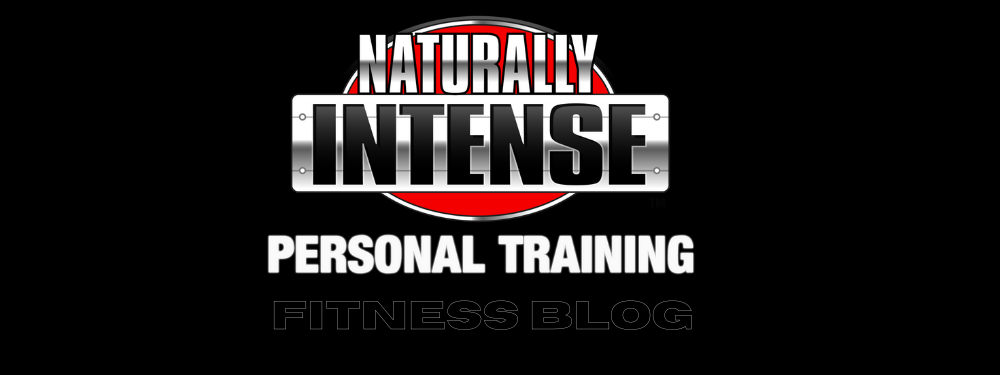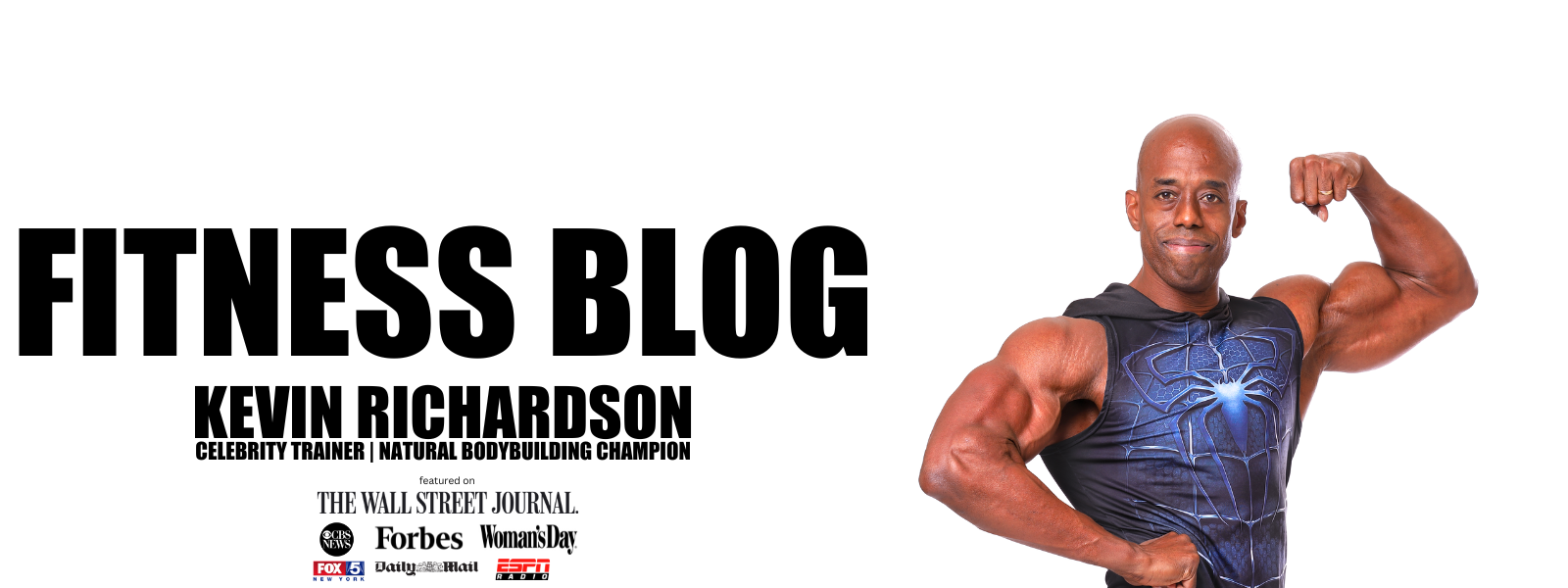
You Don’t Need Large Amounts Of Protein To Build Muscle- A Look At The Science
For many, high protein intakes have always been synonymous with weight training, but the truth is that you don’t need large amounts of protein to build muscle. Spend time at any serious gym and you won’t be able to miss the hardcore crowd of men and women with protein shakes and Tupperware containers filled with skinless chicken breasts ready to be eaten every three to four hours. All in the quest to meet the benchmark of 1 gram of protein per pound of bodyweight, which works out to 2.2 grams of protein per kilogram of bodyweight for those of us metrically inclined. An intake informally accepted as the perceived minimum requirement for increasing muscle size and strength, and it is for most people, quite a lot of food. Consider that the average chicken breast yields at best 25-30 grams of protein and an egg white, (another bodybuilding staple), yields 3.5 grams. Thus, someone weighing 175 lbs would have to eat 6 chicken breasts a day or 50 egg whites to meet the magic 1 gram of protein per pound of bodyweight recommendation. That might sound extreme to the uninitiated, but many weight training enthusiasts aim for two to three times as much, with a combination of protein shakes and solid food- enormous amounts of protein consumed daily for years on end with the idea that more must be better. As popular as this practice might be ‘in the trenches’, it’s nearly three times more protein than the recommended dietary intake. Which, as we will see, makes no recommendations for higher protein requirements for those regularly engaged in resistance training. [1] Truth be told, there is little scientific consensus that consistently higher than normal intakes of protein are necessary for muscle growth and nothing in the form of peer reviewed studies that validate a need for protein supplements of any kind.[2] In this article we take a look at the science behind protein intake requirements for athletes regularly engaged in high intensity resistance exercise. We will look at what we know, the marketing problem behind recommendations for large amounts of protein to build muscle and explore the evidence that categorically shows that more protein does not necessarily mean better results in terms of muscle growth. Thanks for reading and do be sure to check out the video version on YouTube: How Much Protein Do You Need To Build Muscle Naturally And Without Drugs.
More Protein Is Better For Muscle Growth- Where Did The Idea Come From?
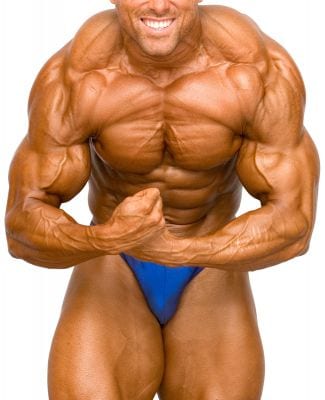
The belief that large amounts of protein (and large amounts of calories) are a necessity if you want to build a sizable amount of muscle mass has been popularized for the past few decades by muscle and fitness magazines owned by companies in the business of manufacturing protein supplements. Protein supplements, in the form of shakes and bars, claim to offer a convenient solution to ‘the problem’ of having to meet the ‘high protein requirements for optimal muscle growth’ without the dilemma of having to scarf down ungodly amounts of food. Bodybuilders, powerlifters and physique competitors using anabolic steroids and growth enhancing drugs are regularly featured in these magazines and their affiliated websites, and their extreme protein intakes are portrayed as one of the main reasons for their unnatural size, strength and muscle definition. Protein intakes that you are encouraged to emulate if you would like to look the way they do. However, there is the omission that anabolic steroids dramatically enhances protein synthesis to a degree several orders above baseline levels for a natural athlete. So much so that the protein intake of a drug using athlete is completely irrelevant to anyone not using growth and performance enhancing drugs. The culture of ‘more protein is always better’ has become very much a part of the consciousness of most individuals training with the goal of increasing muscle mass, and the multi-billion dollar industry built around protein supplements would inevitably collapse if the masses came to the conclusion that they didn’t need enormous amounts of protein to stimulate muscle growth. Cultures can be very difficult to ignore as they are usually the ones shouting the loudest in the room, so to speak, and many would fight tooth and nail to justify the need for ultra-high protein intakes. That said, there is an indisputable body of very nonscientific evidence that most in this part of the world tend to overlook. Namely that men and women in poorer countries who consume far less than one gram per pound of bodyweight have no problem building impressively strong and muscular physiques when engaged in regular resistance type training. [Read my article- Meet Fred Sanya- Bodybuilding On One Meal A Day] A reality that makes absolutely perfect sense when you understand the actual mechanisms of protein synthesis and muscle growth.
You Don’t Need Large Amounts Of Protein To Build Muscle- Understanding Protein Synthesis
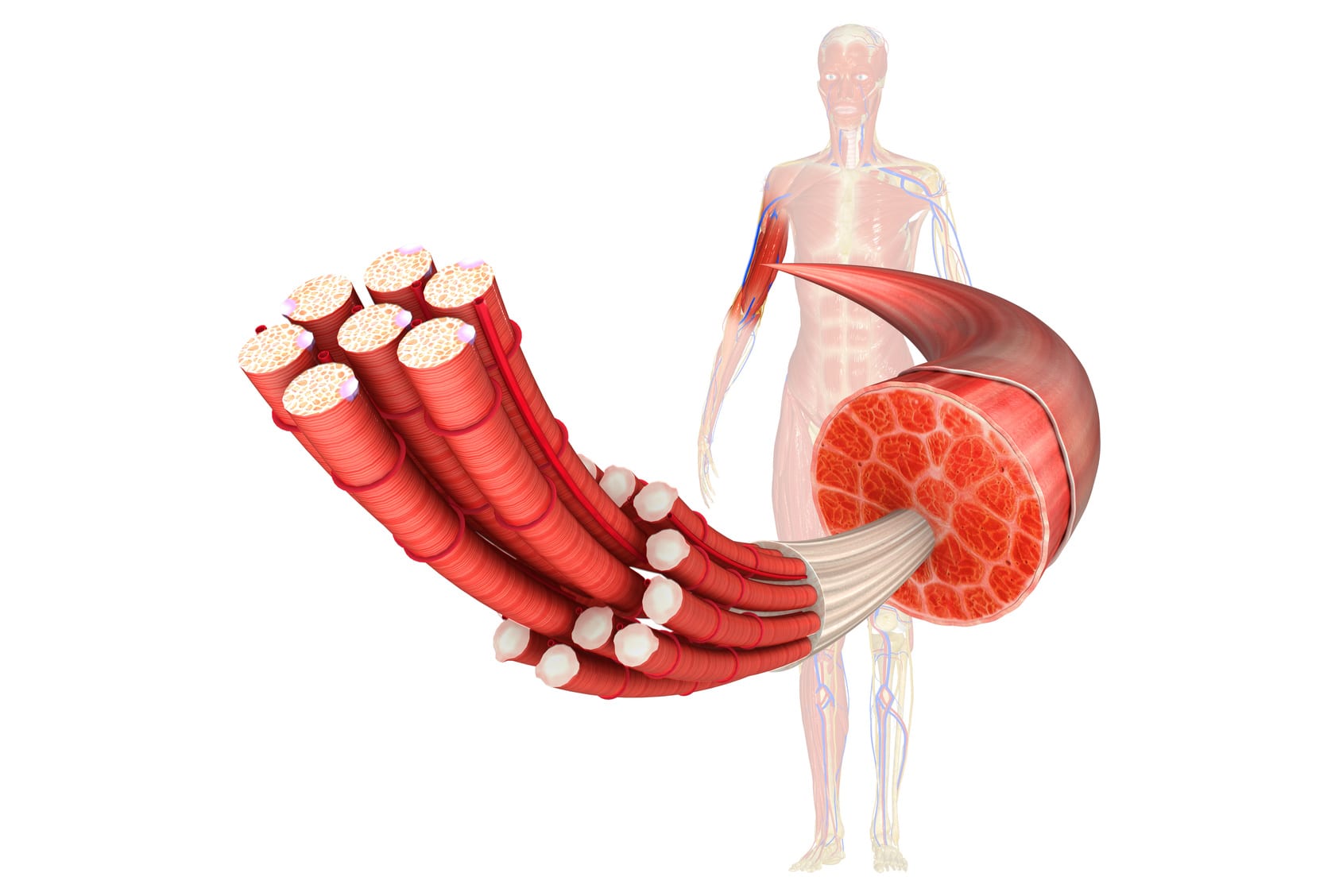
Skeletal muscle is made of protein- stores of amino acids, (which are the molecular building blocks of protein), that act as reservoirs of energy and nitrogen that help us survive periods of disease, starvation and injury. Skeletal muscle accounts for over 40% of our body’s total protein stores and these proteins are constantly in a state of flux, being synthesized (made) and degraded (broken down) in an ongoing state of turnover.[3] In addition to their role as storage pools of amino acids, skeletal muscle tissue is highly plastic and adapts to the mechanical stresses of our everyday lives so that we can perform the physical activities we regularly encounter. In the case of resistance training, if your muscles are subjected to an exercise stimulus of sufficient and unaccustomed intensity, (with a significant degree of eccentric activity), some of the proteins in the muscles used are broken down and there is an increase in protein synthesis for 24 to 48 hours after the training session.[4] During this critical post exercise period, if there is ingestion, or intravenous infusion, of as little as 6 grams of amino acids, rates of protein synthesis will further increase to levels higher than they would be if no protein was ingested.[4,5,6] At this time, if the rate of protein synthesis exceeds the rate of protein breakdown, (positive protein balance) increases in muscle fiber diameter can occur along with changes in muscle fiber type.[2] This increase of muscle fiber diameter, (called hypertrophy), is the very process that allows our muscles to get bigger (and thus stronger) from weight training. [See my article How Muscles Get Bigger and Stronger for a detailed explanation of the mechanical side of muscular hypertrophy]
As dynamic as it may sound, in humans the process of myofibrillar protein turnover that creates muscular hypertrophy is a relatively slow one[7,8] and requires repeated bouts of resistance exercise of sufficient intensity followed by successive periods of post exercise positive protein balance for at least 6 to 8 weeks before changes can be observed.[7,8,9] That said, it does seem to support the argument that individuals engaged in resistance training might require more protein than a sedentary population to repair any ultra-structural muscle tissue damage incurred during the eccentric phases of weight lifting and for increasing muscle mass. Energy requirements would also be thought to increase as lean muscle mass increases since added lean tissue slightly elevates resting energy expenditure. Taking this into consideration, it is plausible to suggest that some increase in macronutrient consumption, protein especially, might be in order to retain lean tissue mass and maintain nitrogen balance [10,11] and it very well might be- to a small degree. The problem with this train of thought is it doesn’t consider fully how our body works and that all of studies that usually cited in defense of higher protein intakes for athletes have focused solely on nitrogen balance as a measure of precise protein requirements, which as we will see can be problematic.
Measuring Protein Requirements In Athletes- Understanding The Problems

Nitrogen is a major component of amino acids and so nitrogen going in and coming out of the body have commonly been used as an indicator of protein metabolism, determining whether the body is in an anabolic or catabolic state.[13] Positive nitrogen balance is associated with increased growth and protein synthesis, (anabolism), whereas negative nitrogen balance is associated with an environment where protein breakdown exceeds protein synthesis (catabolism) as is the case of injury, illness and overtraining. Using nitrogen balance as a marker, direct examinations of protein requirements for athletes have found that those starting resistance training programs maintained positive nitrogen balance at 1.4 to 1.7 grams of protein daily per kilogram of bodyweight and were at negative nitrogen balance consuming 1 gram of protein per kilogram of bodyweight daily. Which, is more than the 0.8 grams of protein per kilogram of bodyweight recommended by nutrition authorities.[14] This and similar findings are commonly used to justify the theory that resistance trained athletes trying to maintain or increase muscle mass require protein intakes that exceed the needs of a sedentary individual. However, as is often the case with matters of human physiology, it is just not that simple as there are recognized flaws inherent in using nitrogen balance as an indicator of protein metabolism. Flaws which may have led to the erroneous interpretation of data from studies concluding that strength trained athletes have higher than normal protein requirements.[15,16,17]
For example, a study of novice bodybuilders found them to be in positive nitrogen balance, (between 12 and 20 grams of nitrogen per day), while consuming 2.8 grams of protein per kilogram of bodyweight.[15] A figure very close to the 1 gram of protein per pound of bodyweight informally recommended. The problem is that if we take nitrogen balance as an indicator of protein metabolism, the numbers simply do not add up, as a nitrogen retention rate of 12-20 grams a day, (making allowances for muscle having a constitution of about 75% water), would mean that each bodybuilder should have been gaining 300 to 500 grams of muscle tissue daily.[15] That’s a kilogram of muscle every two days, (for us metric types), or a pound of muscle every four and a half days, which quite obviously did not occur during the study.[15]
The shortcomings of nitrogen balance are not unknown, but in fact is well documented in the scientific community [15,16,17] and more modern methods of measuring protein metabolism, such as the use of isotope tracers have similar limitations. Limitations in accuracy due to the difficulty in achieving and maintaining steady isotope states and in achieving adequate infusion throughout the body for reliable measurements. We have to keep in mind that our ability to measure changes in protein synthesis and breakdown are always based on indirect indicators that don’t always tell the whole story. In fact they appear to be more indicative of ongoing mechanisms and processes rather than precise and absolute markers of protein balance.[3] Since all official protein intake recommendations have historically used nitrogen balance as a benchmark, we must accept the possibility of error for both sedentary and athletic populations[18] and not use it as a precise measure but rather something that gives us a hint of what is going on.
The More Your Weight Train The LESS Protein Your Body Needs
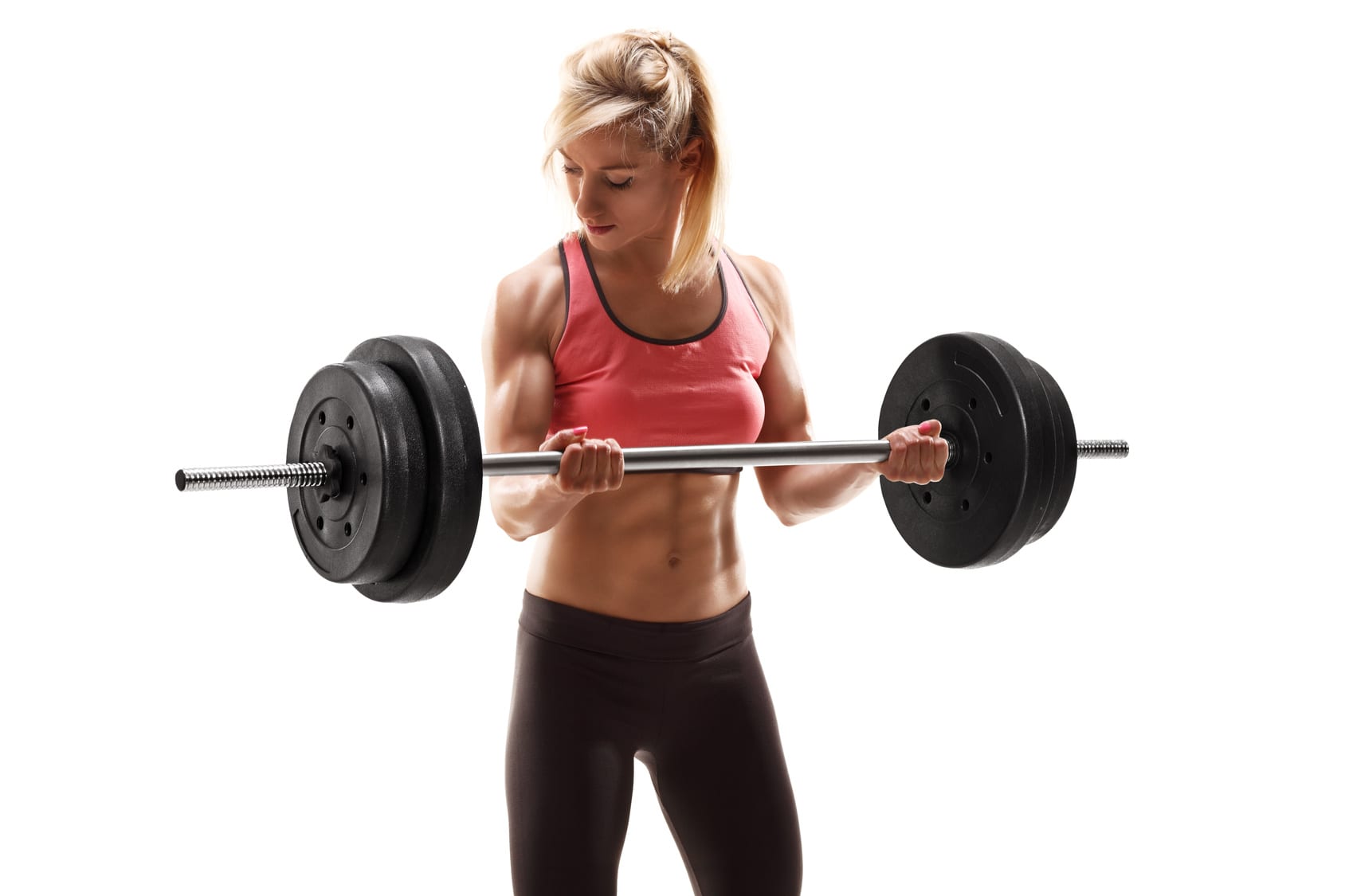
The other problem with recommending a much higher protein intake for resistance trained athletes is the fact that your body uses LESS protein as you become more experienced in weight training and increase muscle mass. Given our bodies’ ability to survive in harsh environments, it would be naïve to think that the ability to build muscle- itself an important adaptation for survival, would be contingent on the availability of an increased supply of protein every several hours. Human physiology is conservative by nature and always strives to be efficient as possible- an efficiency that helps us use less energy the more we perform aerobic activity so it should come as no surprise that the anaerobic activity by which muscle mass is increased makes our body’s use of protein more efficient, thus decreasing protein requirements, not increasing them.[41]
Several studies support this finding, for example, an earlier mentioned study which found nitrogen balance to be positive after a daily intake of 1.4-1.7 grams of protein per kilogram of bodyweight among novice bodybuilders observed a drop in the amount of protein required to maintain protein balance to 1.05 grams of protein after a month of training.[14] Suggesting a successful biological adaptation to the stress of resistance training [3] through improved intracellular reutilization of amino acids. Other studies have confirmed this and thus, during the INITIAL stages of resistance training, dietary protein requirements appear to increase in order to compensate for increases in muscle protein synthesis and to aid recovery from the unaccustomed exercise stimulus.[3, 14,41, 42] However, over the course of several weeks, continued training results in a decrease in post exercise muscle protein synthesis and the duration of increased protein synthesis as well. [19,20, 41, 42] Some studies have even found no increase whatsoever in protein synthesis after resistance exercise in seasoned weight trained athletes, even when protein is consumed post workout. [21,22] However, this could be due to a lack of relative training intensity as other studies have found decreased but present increases in protein synthesis in highly trained strength athletes. Researchers theorize that as long as the contractile activity during a resistance training session is beyond the current capacity of the subject, it will always stimulate some degree of muscle protein synthesis but not as much perhaps as it would have during the initial weeks of training.[3] Taking this into account, it becomes difficult to reconcile the idea that resistance trained athletes would have significantly higher protein requirements than the general population.[2,3, 41, 42]
You Don’t Need Large Amounts Of Protein as Building Muscle With Moderate Protein Intakes Is Possible
This phenomenon of protein economization has also been noted in other mammals [44,45,46] and rather elegantly helps to explain why so many of us in developing countries were able to significantly increase baseline muscle mass while consuming far less than the 1 gram of protein per pound of bodyweight cited as a minimum requirement in bodybuilding and strength training circles. I myself was able to go from 125 lbs to a very lean 198.5lbs while consuming an average of 120 grams of protein a day during my first six years of extremely high intensity weight training. An intake that very quickly dropped below 1 gram of protein per pound of bodyweight as I increased in size and I would have loved to have been able to eat more, but at the time, growing up in my native island of Trinidad, there was simply no way I could afford a higher protein intake. Nevertheless, I was able to put on an impressive amount of muscle mass without the use of performance enhancing drugs. It’s a common story among many of the bodybuilders I have had the pleasure of knowing from Kenya, Mali, The Ivory Coast and other islands in the West Indies. (See my article: Bodybuilding on One Meal A Day)
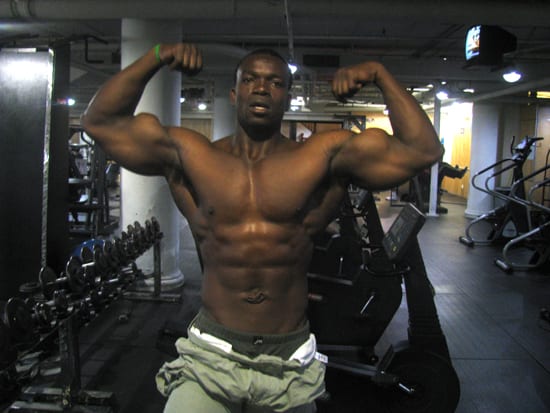
Caloric Intake Might Be More Important Than Protein Intake When It Comes To Building & Retaining Muscle
In landmark studies dating as far back as the 1950’s, it was clearly established that caloric intake plays a vital role in determining protein requirements.[23] So much so that researchers were able to demonstrate that energy intake may be as, if not more important than protein intake for maintaining positive nitrogen balance.[24,25,26] You see, even when no protein is consumed, increasing energy intake improves nitrogen balance. On the other hand, even when consuming high protein intakes, positive nitrogen balance is NOT possible unless the subject is consuming more calories than they were expending. Now sufficiently intense exercise can increase nitrogen balance even in the face of a caloric deficit but those cutting their calories to the point of deficit may still see a reduction in lean muscle mass as a result.[27,28] A combination of resistance exercise of adequate intensity in conjunction with a moderately higher amount of protein in the order of 27% of total energy intake (as opposed to the 12-15% recommended in the Dietary Guidelines for Americans), has been shown to attenuate and perhaps even completely prevent loss of muscle mass during periods of lowered calorie intakes- especially among women.[2]
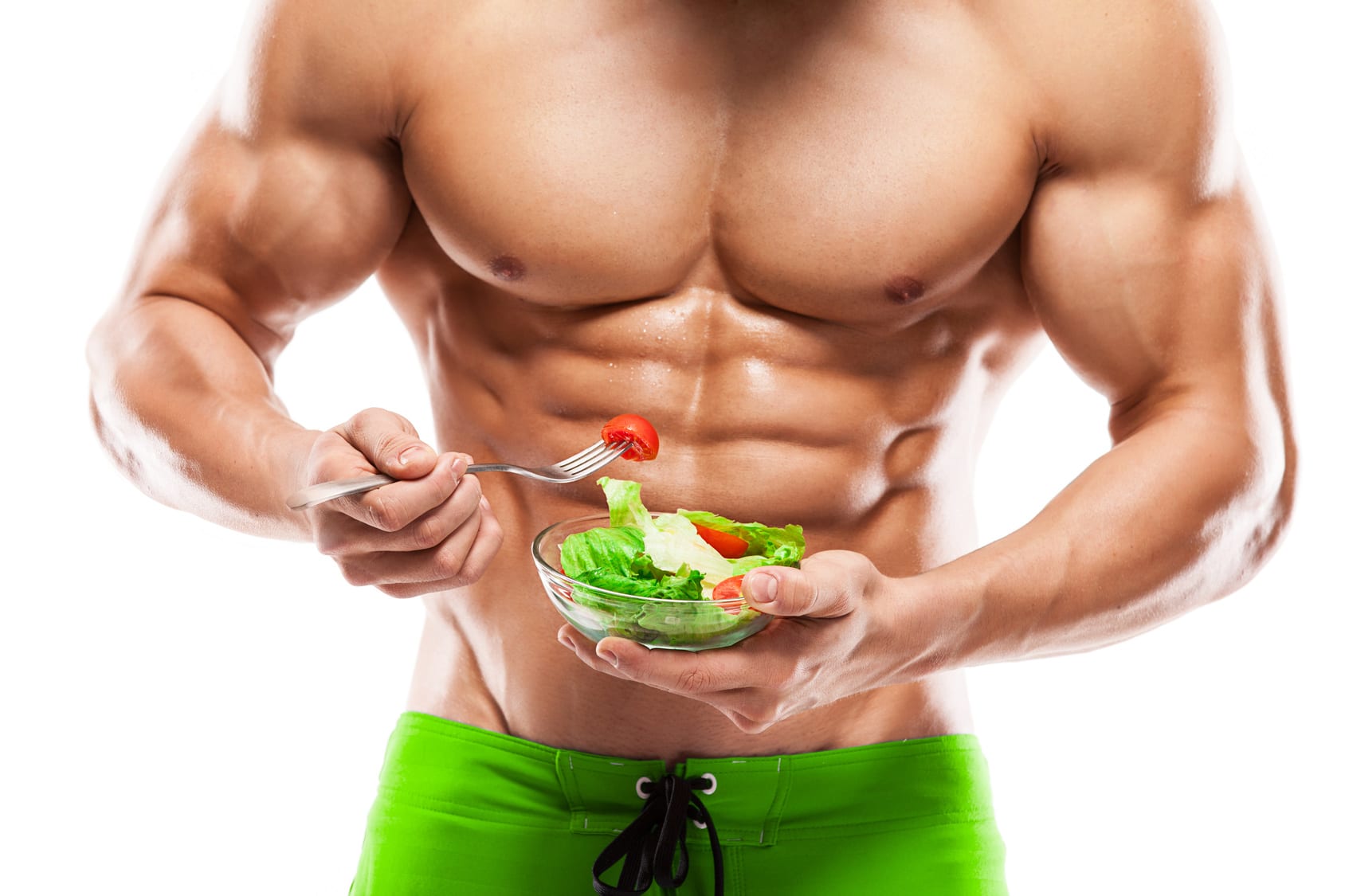
The Importance of Carbohydrates With Protein For Retaining Muscle Mass While Dieting
In the quest to cut calories many resistance training individuals severely restrict their carbohydrate intake while increasing their protein intake in order to retain as much muscle as possible during their cutting phase. As popular as this practice might be it is counterproductive as carbohydrates play a major role in sparing and preventing muscle protein losses, especially in periods of energy deficit.[29] That said, those focused on holding on to as much muscle mass as possible while dieting would be well advised to engage in high intensity resistance training, consume a higher than normal amount of protein with adequate amounts of carbohydrate to keep muscle glycogen levels high enough to support the intense training and support protein retention.[2,29]
What Happens When You Eat Too Much Protein
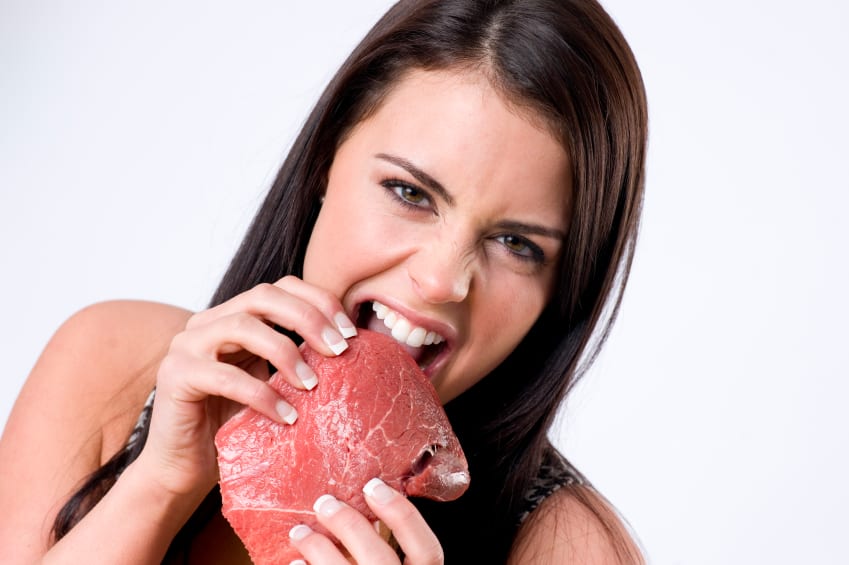
In the absence of existing kidney disease, the human body is able to process very high protein intakes without any adverse effects.[30][See my article How Much Protein Do You Need to Build Muscle] Many authorities warn of adverse effects from a diet where protein comprises more than 35 to 40% of total energy intake because of limitations to the liver’s ability to synthesize urea. Urea is a waste product of protein metabolism which can be harmful to our body when present in large quantities. On the other hand, many hunter gatherer tribes consume diets where animal protein makes up as much as 50% of their total energy intake with no reported incidences of renal disease[31 and many,(but not all), modern hunter gatherer tribe members exhibit a degree of health that most Westerners would envy. Now before this is taken as an endorsement to consume ultra-high amounts of animal protein as proponents of the so called ‘Paleo’ styled diets might suggest, we must bear in mind that you cannot compare a diverse diet of lean wild game, fish and insects to a diet made up almost exclusively of domesticated meats available in Western countries. Organic or not, compared to wild game modern meat supplies are relatively high in saturated fats while wild game is low in saturated fat, high in polyunsaturated fats and has very different nutrient profile.[32] (Read my article Meat) The higher levels of saturated fats in domesticated red meat for example are such that nutritional advisories recommend that it comprise only a small portion of your total protein intake due to associations of higher risk of cardiovascular disease among those consuming diets high in saturated fats.[36,37,38,39] While many strength athletes single out the higher protein intakes of hunter gatherers as justification for their own high intakes, vast differences in both lifestyle and sources of protein sources make this a difficult proposition to endorse.
Too Much Protein- Does It Affect Your Results?

In a way eating too much protein can be problematic. Very high protein intakes might not necessarily be harmful but it may be counterproductive in terms of making it more difficult for you to retain existing muscle mass in the long term.[2,3] High protein intakes among highly trained individuals appear to increase rates of resting protein turnover,[2} and because of the faster rate of protein turnover, if the accustomed high protein diet is suddenly reduced it leads to a rapid loss of body protein in the form of muscle mass.[33] This higher protein turnover rate could explain several things- firstly why those who habitually consume low amounts of protein are able to maintain appreciably high levels of lean muscle mass. Secondly it explains why some studies conclude that well trained athletes have increased protein requirements which occur not because of greater muscle mass levels but because of higher protein intakes that increase resting protein turnover. Another case whereby correlation does not imply causation and is the basis of arguments by many with high levels of muscle mass who swear that their bodies’ need very high protein diets to maintain their size when this is not necessarily the case. In fact a gradual reduction of their protein intake would not result in a significant loss of muscle mass and the idea of gradually decreasing protein intake so as to maintain muscle mass during periods of lower protein intake is a practice common in military survival training and among mountaineers to retain muscle mass before venturing into environments where food intake.[3,33]
How Much Protein Is Too Much?
The other problem is that of waste- and in a world where we are beginning to understand that our appetites for animal protein does present environmental challenges to a world with limited resources, it is in our best interest to not be consuming more protein than we actually need. Studies have shown that after a bout of intense resistance exercise, muscle protein synthesis increases with the ingestion of little as 3-6 grams of amino acids consumed several hours apart so as to not ‘top out’ the body’s amino acid delivery system.[34] We don’t know exactly to the gram how much protein would have to be consumed to maximally stimulate muscle synthesis after resistance exercise, but we do know that excessively large protein meals offer no additional benefits as amino acids ingested in excess of what the body needs are directed towards oxidation and increased urea production.[34] And who wants to spend money on food and or protein supplements that will do little more than give you expensive urine? That said, here are my recommendations:
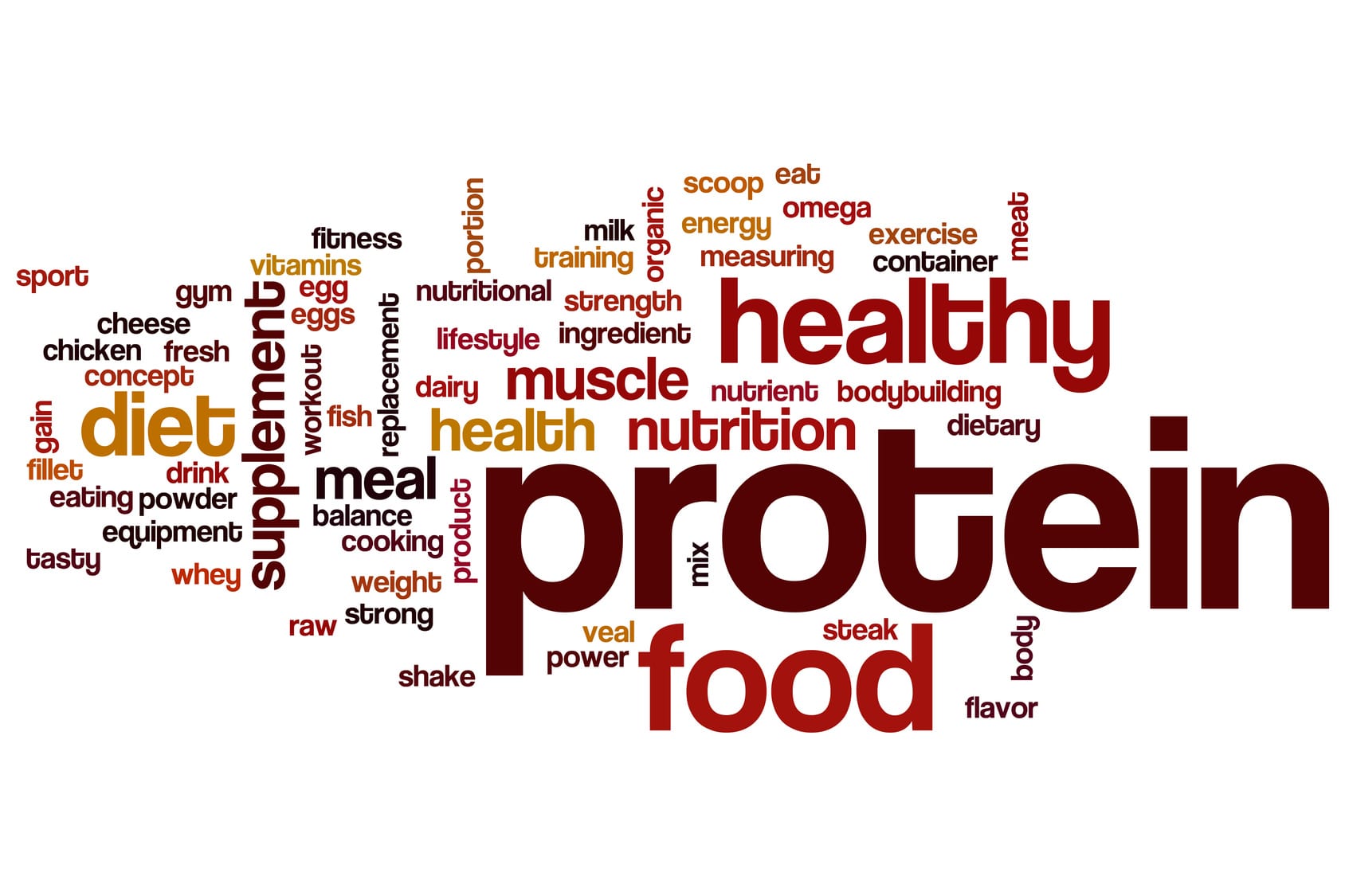
Recommendations For Protein Intakes:
1. You Need A Higher Protein Intake While Dieting
A high protein intake does appear to spare and possibly even prevent muscle loss during periods of caloric restriction when individuals are trying to minimize body fat.[35] So those dieting might benefit from eating more protein in the order of about 27% of total energy intake.[35]
2. Don’t Make The Mistake Of Cutting Carbohydrates Too Severely While Dieting
Carbohydrates spare muscle protein losses during periods of lowered caloric intakes, so always keep some carbohydrates in your diet while dieting down.[28,29]
3. You Need A Higher Protein Intake Needed When Beginning A Weight Training Program
Those starting a resistance training program should consume a slightly higher protein intake in the order in the order of 1.33 grams of protein per kilogram of bodyweight [15,16] (which is considered a ‘safe’ amount) as there does appear to be an increased need for protein during the initial stages of training.
4. Experienced Weight Trained Individuals Do Not Benefit From Overly High Protein Intakes
Those training for a considerable period of time would be best advised to not overdo their protein intakes as it offers no additional benefits and may actually make muscle mass retention harder if they stop their high protein diets suddenly, as it increases resting protein turnover. Those already consuming extremely high protein diets might consider gradually reducing their intake and at a certain point, large protein meals only increase urea production without eliciting any notable benefits.
5. Getting Enough Calories May Be More Important Than Protein Intake
Meeting adequate energy requirements might have a greater impact on supporting intense training and promoting muscle growth than actual protein intake,[26] and as long as energy requirements are met through a balanced diet, protein levels would be more than sufficient.[2]
6. Protein Supplementation Is Not Necessary
While there may be many opposing ideas on protein requirements, there remains no evidence that protein supplements are more effective than consumption of high protein foods for muscle growth or that any form of supplementation is required for resistance trained individuals as they already habitually consume far more protein than is recommended levels.[2] And it is unlikely that anyone training would be consuming less protein than they really need if they are eating a balanced diet.[3]
High Intensity Bodyweight Training: Ballistic Pushups & Dips!
This was a tough one!
Starts out with ballistic push ups (like clap pushups but without the clap as my wrist is still not 100%) nonstop for 20 reps, then all out on dips for 10 reps.
To say it was painful would be an understatement, but you just have to push through and keep on going.
Still training, hope you are too and as always, Excelsior!!! #naturallyintense
#hometraining #homeworkout #homeworkout #highintensitytraining #naturalbodybuilder #naturalbodybuilding #fitover40 #naturalbodybuildingvideos #chestday #chesttraining #naturalbodybuildingtips #pushups #dips #bodyweighttraining #highintensitytrainingtips #drugfreebodybuilding #calesthenics
Kevin's Unconventional Biceps Training- 3-6 Minutes a Week!
In this video I go over my biceps training using the Naturally Intense High Intensity Training protocols that helped me go from having arms measuring 11.5 to 12 inches to 18 inches drug free!
It's an unconventional approach for certain, but it's one that's helped my arms grow and the hundreds of men and women I have trained over the past 30 plus years.
Now, my success isn't due to being genetically gifted, as it took me the better part of 11 years to get my arms up to those measurements.
Which is significant as it works and been been proven time and time again to work for the average man or woman trying to grow their arms without drugs.
It's my hope that these high intensity training protocols can help you as much as they helped me!
Click on my bio link to see the full video on my YouTube channel and thanks as always for taking the time to look at my work!!! Excelsior!!! #naturallyintense
#highintensitytraining #naturalbodybuilder #naturalbodybuilding #fitover40 #naturalbodybuildingvideos #armworkout #bicepsworkout #naturalbodybuildingtips #biceps #armtraining #highintensitytrainingtips #drugfreebodybuilding #barbellcurls
At the Lancaster Classic Day 2 Elimination Rounds Against European Champion, and World Record Holder Leo Pettersen @leo_barebow_archer
I don't talk much about it but I'm also a competitive barebow archer (surprise!) and last Saturday I had the honor of making it to Day 2 at the Lancaster Archery Classic in the Barebow Division, as I made the top 64 out of 267 competitors and had a chance to shoot with some of the greatest barebow shooters on the planet!
I didn't make it past Leo, but it was a real rush to be there and a huge thanks to my coach, Joe MyGlyn @prolinearchery for helping me get there.
Thanks as well to my good friend @sean_chan33 for all of his help from the very start, to my line buddy Aaron Shea for taking the shot and showing up to support!
My thanks as well to rob_kaufhold for putting on and promoting one of the best archery tournaments on earth!
Thanks also to to everyone who took the time to send a supporting word and I am looking forward to next year!!! #naturallyintense #barebow
#lancasterclassic #lancasterarcheryclassic2024 #lancasterarchery #archery #fitover40 #barebowrecurve #targetarchery
Dumbo, Brooklyn circa 2004
This shot was taken as part of the promotion for my Naturally Intense DVD and was about a year after my last bodybuilding competition.
It was a grueling photoshoot.
We started at about 10 am and finished around 4pm and I was completely spent, but the more we shot the sharper I looked, so we kept on going.
It's nice to look back from time to time and as tired as I was, we all had a blast!
My thanks to @stephanie_corne_artwork, @https://pulse.ly/itgnag2dec and @ftaz1 for taking the shots!!!
Thanks for watching and as always, Excelsior!!! #naturallyintense
#naturalbodybuilder #naturalbodybuilding #throwback #fifthavenuegym #5thavenuegym #drugfreebodybuilding #naturalbodybuildinglifestyle #gymlife #gymmotivation #naturalbodybuildingmotivation #bodybuilding #blackandwhite #instablackandwhite #bnw
Can You Build An Impressive Physique Training Only At Home?
Absolutely!
I stopped training in commercial gyms as of March 2020 and have been training at home ever since.
Initially I was admittedly worried that I might lose some of my gains or not make as much progress, but that certainly wasn't the case.
I've consistently continued to improve with my high intensity workouts and muscles have no idea where they are training.
As long as the criteria of adequate intensity and overload are met, there will be an adaptive response and your muscles will get bigger and stronger.
So don't worry at all about where you train, focus instead of what will be the best way for you to always be training!
Thanks for watching and as always, Excelsior!!! #naturallyintense
Kevin's Three Day Training Spilt!
For the past 33 years I have trained three times a week with Naturally Intense High Intensity Training workouts lasting 10, 15 to 20 minutes max.
It's a training split tried and testes not only in it's helping me realize my goal of becoming a successful natural bodybuilder, but it's also helped hundreds of men and women over the past three decades.
I have tested just about every possible training split imaginable and for this particular style of high intensity training, this particular grouping consistently yields fantastic results.
I hope it helps you as much as it's helped me over the years and thanks so much for taking the time to look at my work.
Keep training hard and Excelsior!!! #naturallyintense
Excelsior!!! #naturallyintense
#trainingsplit #3daytrainingsplit #threedaytrainingsplit #naturalbodybuilding #naturalbodybuilder #naturalbodybuildingvideo #naturalbodybuildingmotivation #naturalbodybuildingtips #drugfreebodybuilding #bodybuilding #highintensitytraining #highintensitytrainingtips
405 Stiff Leg Deadlift for 7 Reps! High Intensity Training.
First leg workout of the year and already pushing it!
I haven't done a stiff leg deadlift over 315lbs for about 3 years at this point, and I did my last set with 315lbs and comfortably got to 10 reps and decided I had far too much gas left in the tank and that I should go up in weight.
So I did.
I figured I might get a solid 6 reps in, but I made it to 7 and I think I could have gone on to get a full 10 reps BUT that's when good judgement prevailed.
As a bodybuilder having not trained this heavy for so many years, the shock of this much weight would be more than enough to stimulate muscle growth, and doing more reps wouldn't yield any greater returns, only increase the likelihood of injury.
It's not about the numbers, it's about training to a point where you achieve your goal, and it's important to have a goal in mind as a bodybuilder based on increasing muscle mass rather than hitting a particular number.
Besides, if in my 20's I never did more than 405lbs on a stiff leg deadlift, it doesn't make any sense going heavier than when I am almost 50!
Could I deadlift more at this point?
Absolutely but just because you can doesn't mean you should!
So keep those weights in a good working range, keep it safe and as always Excelsior!!! #naturallyintense
#hometraining #homeworkout #homeworkout #roguerack #highintensitytraining #naturalbodybuilder #naturalbodybuilding #fitover40 #naturalbodybuildingvideos #backworkout #naturalbodybuildingtips #backtraining #highintensitytrainingtips #drugfreebodybuilding #fitoverforty #deadlift
Turning 50 in a few months...
Not much of a big deal for me as I still feel pretty much the same but I hope that my example helps show what can be done with a lifetime commitment to eating well and training consistently!
Thanks for coming along on the journey and as always, Excelsior!!! #naturallyintense
#naturalbodybuilder #naturalbodybuilding #healthylifestyle #fitover40 #drugfreebodybuilding #naturalbodybuildingmotivation #natty #fitness
Please note that all material is copyrighted and DMCA Protected and can be reprinted only with the expressed authorization of the author.
Featured everywhere from the Wall Street Journal to CBS News, Kevin Richardson’s Naturally Intense High Intensity Training have helped hundreds lose weight and transform their bodies with his 10 Minute Workouts. One of the top natural bodybuilders of his time, Kevin is also the international fitness consultant for UNICEF and one of the most sought after personal trainers in New York City. Learn more about his award winning NYC personal training services here!
Related articles:
Are Protein Shakes Bad For You And Will They Make You Get Fat?
Aerobic Exercise and Strength Training
References for You Don’t Need Large Amounts Of Protein To Build Muscle
1. Dietary reference intakes for energy, carbohydrate, fiber, fat, fatty acids, cholesterol, protein, and amino acids, part 1. Washington, DC: National Academy Press, DC, 2003
2. SM Philips. Protein requirements and supplements in strength sports. Nutrition 2004
3. MJ Rennie, KD Tipton. Protein and amino acid metabolism during and after exercise and the effects of nutrition. Annu Rev Nutr 2000
4. Phillips SM, Tipton KD, Aarsland A, Wolf SE, Wolfe RR. Mixed muscle protein synthesis and breakdown following resistance exercise in humans. Am J Physiol 1997
5. Biolo G, Maggi SP, Williams BD, Tipton KD, Wolfe RR. Increased rates of muscle protein turnover and amino acid transport after resistance exercise in humans. Am J Physiol 1995
6. Phillips SM, Tipton KD, Ferrando AA, Wolfe RR. Resistance training reduces the acute exercise-induced increase in muscle protein turnover. Am J Physiol 1999
7. Staron RS, Karapondo DL, Kraemer WJ, et al. Skeletal muscle adaptations during early phase of heavy-resistance training in men and women. J Appl Physiol 1994
8. Hortobagyi T, Dempsey L, Fraser D, et al. Changes in muscle strength, muscle fibre size and myofibrillar gene expression after immobilization and retraining in humans. J Physiol 2000
9. Green H, Goreham C, Ouyang J, Ball-Burnett M, Ranney D. Regulation of fiber size, oxidative potential, and capillarization in human muscle by resistance exercise. Am J Physiol 1999
10. McCall GE, Byrnes WC, Dickinson A, Pattany PM, Fleck SJ. Muscle fiber hypertrophy, hyperplasia, and capillary density in college men after resistance training. J Appl Physiol 1996
11. Lemon PW. Effects of exercise on dietary protein requirements. Int. J. Sport Nutr 1998
12. Tipton KD, Ferrando AA, Phillips SM, Doyle D Jr, Wolfe RR. Postexercise net protein synthesis in human muscle from orally administered amino acids. Am. J. Physiol 1999
13. World Health Organization. Protein and amino acid requirements in human nutrition. WHO Technical Support Series
14. Lemon PW, Tarnopolsky MA, MacDougall JD, Atkinson SA. Protein requirements and muscle mass/strength changes during intensive training in novice bodybuilders. J Appl Physiol 1992
15. Tarnopolsky MA, MacDougall JD, Atkinson SA. Influence of protein intake and training status on nitrogen balance and lean body mass. J Appl Physiol 1988
16. Tarnopolsky MA, Atkinson SA, MacDougall JD, et al. Evaluation of protein requirements for trained strength athletes. J Appl Physiol 1992
17. Lemon PW, Tarnopolsky MA, MacDougall JD, Atkinson SA. Protein requirements and muscle mass/strength changes during intensive training in novice bodybuilders. J Appl Physiol 1992
18. Young VR. Nutritional balance studies: indicators of human requirements or adaptive mechanisms? J Nutr 1985
19. Wolfe RR. Regulation of muscle protein by amino acids. Journal of Nutrition 2002
20. Candow DG, Burke NC, Smith-Palmer T, Burke DG. Effect of whey and soy protein supplementation combined with resistance training in young adults. Internatioal Journal of Sport Nutrition and Exercise Metabolism
21.Roy BD, Tarponosky MA, MacDougall JD, Gowles J, Yarasheski KE. Effect of glucose supplement timing on protein metabolism after resistance exercise. J Appl Physiol. 1998.
22. Tipton KD, Ferrando AA, Philips SM, Doyle D Jr, Wolfe RR. Muscle protein metabolism in female swimmers after a combination of resistance and endurance exercise. J Appl Physiol 1996
23. Garza C, Scrimshaw NS, Young VR. Human protein requirements: the effect of variations in energy intake within the maintenance range. Am J Clin Nutr 1976
24. Butterfield GE, Calloway DH. Physical activity improves protein utilization in young men. Br J Nutr 1984
25. Todd KS, Butterfield GE, Calloway DH. Nitrogen balance in men with adequate and deficient energy intake at three levels of work. J Nutr 1984
26. Calloway DH, Spector H. Nitrogen balance as related to caloric and protein intake in active young men. Am J Clin Nutr 1954
27. Zachwieja JJ, Ezell DM, Cline AD, et al. Short-term dietary energy restriction reduces lean body mass but not performance in physically active men and women. Int J Sports Med 2001
28. Cox KL, Burke V, Morton AR, Beilin LJ, Puddey IB. The independent and combined effects of 16 weeks of vigorous exercise and energy restriction on body mass and composition in free-living overweight men—a randomized controlled trial. Metabolism 2003
29. Richardson DP, Wayler AH, Scrimshaw NS, Young VR. Quantitative effect of an isoenergetic exchange of fat for carbohydrate on dietary protein utilization in healthy young men. Am J Clin Nutr 1979
30.Cordain L. Miller JB, Eaton SB, Mann N, Holt SHA. Speth JD. Plant-animal subsistence ratios and macronutrient energy estimations in worldwide hunter gatherer diets. Am J Nutr 2000
31. Kious, Brent M. Hunter-gatherer Nutrition and Its Implications for Modern Societies. Nutrition Noteworthy 2002
32. Eaton SB. Humans, lipids and evolution. Lipids 1992]
33. Rennie MJ. Physical exertion, amino acid and protein metabolism and protein requirements. In The Role of Protein and Amino Acids in Sustaining and Enhancing Performance, ed. FaNBIoM Committee on Military Nutrition Research. Washington, DC: Natl. Acad. Press 1999
34. Bohe´ J, Low A, Wolfe RR, Rennie MJ. Human muscle protein synthesis is modulated by extracellular, not intramuscular amino acid availability: a dose-response study. J Physiol 2003
35. Kraemer WJ, Volek JS, Clark KL, et al. Influence of exercise training on physiological and performance changes with weight loss in men. Med Sci Sports Exerc 1999
36. Kritchevsky D. History of recommendations to the public about dietary fat. J Nutr. 1998
37. Warensjö E, Sundsröm J, Vessby B, Cederholm T, Risérus U. Markers of dietary fat quality and fatty acid desaturation as predictors of total and cardiovascular mortality: a population-based prospective study. Am J Clin Nutr. 2008
38. Hu FB, Stampfer MJ, Manson JE, Ascherio A, Colditz GA, Speizer FE, et al. Dietary saturated fats and their food sources in relation to the risk of coronary heart disease in women. Am J Clin Nutr. 1999 1. Kritchevsky D. History of recommendations to the public about dietary fat. J Nutr. 1998
39. Warensjö E, Sundsröm J, Vessby B, Cederholm T, Risérus U. Markers of dietary fat quality and fatty acid desaturation as predictors of total and cardiovascular mortality: a population-based prospective study. Am J Clin Nutr. 2008
40. Farnsworth E, Luscombe ND, Noakes M, et al. Effect of a high-protein, energy-restricted diet on body composition, glycemic control, and lipid concentrations in overweight and obese hyperinsulinemic men and women. Am J Clin Nutr 2003
41. Butterfield GE, Calloway DH. Physical activity improves protein utilization in young men. Br. J. Nutr. 1984
42. Phillips SM, Tipton KD, Ferrando AA, Wolfe RR. Resistance training reduces the acute exercise-induced increase in muscle protein turnover. Am J Physiol 1999
43. Phillips SM, Parise G, Roy BD, et al. Resistance-training-induced adaptations in skeletal muscle protein turnover in the fed state. Can J Physiol Pharmacol 2002
44. Farrell PA, Fedele MJ, Hernandez J, Fluckey JD, Miller JL III, et al. Hypertrophy of skeletal muscle in diabetic rats in response to chronic resistance exercise. J. Appl. Physiol. 1999
45. Farrell PA, Fedele MJ, Vary TC, Kimball SR, Jefferson LS. Effects of intensity of acute-resistance exercise on rates of protein synthesis in moderately diabetic rats. J. Appl. Physiol. 1998
46. Farrell PA, Fedele MJ, Vary TC, Kimball SR, Lang CH, Jefferson LS. Regulation of protein synthesis after acute resistance exercise in diabetic rats. Am. J. Physiol. 1999
